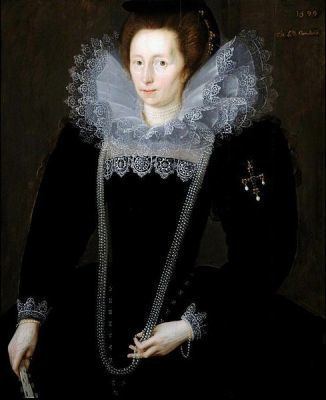Father Thomas of Brotherton Died March 24, 1399, Middlesex Name Margaret, of | Mother Alice Hales | |
 | ||
Parents Thomas of Brotherton, 1st Earl of Norfolk Children Anne Hastings, Countess of Pembroke Similar People Margaret of France - Queen of, Eleanor of Castile, Edward I of England, Geoffrey Plantagenet - Count of, Edward II of England | ||
Margaret, in her own right Countess of Norfolk (sometimes surnamed Brotherton or Marshal; c. 1320–24 March 1399), was the daughter and eventual sole heir of Thomas of Brotherton, eldest son of Edward I, by his first marriage. In 1338 she succeeded to the earldom of Norfolk and the office of Earl Marshal.
Contents

Family
Margaret (b. about 1320), was the daughter of Thomas of Brotherton and Alice de Halys (d. in or before 1330). Her paternal grandparents were Edward I and Margaret (1279?–1318), daughter of Philippe III of France (d.1285). Her maternal grandparents were Roger de Halys of Hales Hall in Loddon, Roughton, Norfolk and Alice. She had a brother and sister:
Life
In 1335 she was married to John Segrave, 4th Baron Segrave, and proceeded to have four children - two sons and two daughters - by him. In 1350, she sought a divorce on the ground that they had been contracted in marriage (in other words betrothed) before she was of marriageable age, and that she had never consented to cohabit with him. She made known her intention of traveling to the continent in order to plead personally with the Pope for a divorce. King Edward III prohibited her from leaving England, but she set off incognito anyway, having taken care to obtain a safe conduct from the King of France.
The following year (1351) Edward III charged her with having crossed the English Channel in contravention of his prohibition. The inquisition, regarding this incident, shows that Margaret unlawfully crossed the Channel and met with a servant of her future husband, Sir Walter de Mauny, who broke his lantern with his foot so she could pass unnoticed and acted as her guardian during her sojourn in France. This incident and the involvement of her future husband's retainer may indicate the real motivation for Margaret seeking a divorce.
The divorce case was ultimately heard by the Pope's auditor, the Dean of St. Hilary's at Poitiers. However, Margaret's first husband died in 1353, before the divorce could be finalized. Shortly thereafter, and just before 30 May 1354, she married Sir Walter de Mauny without the King's licence. They were married 18 years, and had three children before he died at London on 8 or 13 January 1372.
On 29 September 1397, Margaret was created Duchess of Norfolk for life. She died 24 March 1399, and was buried in the choir of Grey Friars in the City of London.
The executors of her will are reported to be John Sileby & Walter fitz Piers, who in 1399 were reported to be attempting to recover money due to her estate.
Marriages and issue
Margaret married firstly, about 1335, John Segrave, 4th Baron Segrave, by whom she had two sons and two daughters:
Shortly before 30 May 1354, Margaret married secondly, and without the King's licence, Sir Walter Mauny, by whom she had a son and two daughters:
Distinction
As her brother had died without issue, she succeeded to the earldom of Norfolk and the office of Earl Marshal at her father's death in 1338. To date, she is the only woman to have held the latter office.
Fictional representations
Margaret is a character in Georgette Heyer's last novel My Lord John, where she is portrayed sympathetically as a kindly though outwardly formidable old lady.
